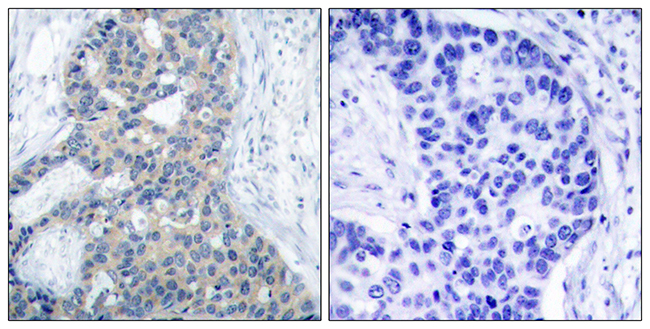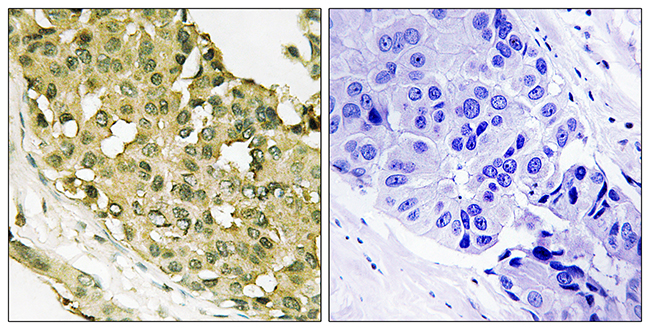Stathmin 1 ELISA Kit
Regulatory status: For research use only, not for use in diagnostic procedures.
2. 10x TBS: 24 mL (10x), Clear
3. Quenching Buffer: 24 mL (1x), Clear
4. Blocking Buffer: 50 mL (1x), Clear
5. 10x Wash Buffer: 50 mL (10x), Clear
6. 100x Anti-Stathmin 1 Antibody (Rabbit Polyclonal): 60 μL (100x), Purple
7. 100x Anti-GAPDH Antibody (Mouse Monoclonal): 60 μL (100x), Green
8. HRP-Conjugated Anti-Rabbit IgG Antibody: 6 mL (1x), Glass
9. HRP-Conjugated Anti-Mouse IgG Antibody: 6 mL (1x), Glass
10. Primary Antibody Diluent: 12 mL (1x), Clear
11. Ready-to-Use Substrate: 12 mL (1x), Brown
12. Stop Solution: 12 mL (1x), Clear
13. Crystal Violet Solution: 6 mL (1x), Glass
14. SDS Solution: 24 mL (1x), Clear
15. Adhesive Plate Seals: 4 Seals
| Product Name | Cat. No. | Applications | Host Species | Datasheet | Price | Add to Basket |
|---|
| Product Name | Cat. No. | Applications | Host Species | Datasheet | Price | Add to Basket |
|---|
Proteomic Analysis of Colorectal Cancer Metastasis: Stathmin-1 Revealed as a Player in Cancer Cell Migration and Prognostic Marker
JOURNAL OF PROTEOME RESEARCH
Authors: Tan, Hwee Tong; Wu, Wei; Ng, Yi Zhen; Zhang, Xuxiao; Yan, Benedict; Ong, Chee Wee; Tan, Sandra; Salto-Tellez, Manuel; Hooi, Shing Chuan; Chung, Maxey C. M.
A PDGFR alpha-driven mouse model of glioblastoma reveals a stathmin1-mediated mechanism of sensitivity to vinblastine
NATURE COMMUNICATIONS
Authors: Jun, Hyun Jung; Appleman, Vicky A.; Wu, Hua-Jun; Rose, Christopher M.; Pineda, Javier J.; Yeo, Alan T.; Delcuze, Bethany; Lee, Charlotte; Gyuris, Aron; Zhu, Haihao; Woolfenden, Steve; Bronisz, Agnieszka; Nakano, Ichiro; Chiocca, Ennio A.; Bronson, Roderick T.; Ligon, Keith L.; Sarkaria, Jann N.; Gygi, Steve P.; Michor, Franziska; Mitchison, Timothy J.; Charest, Al
Invoice / Purchase Order
Credit card
![]()


